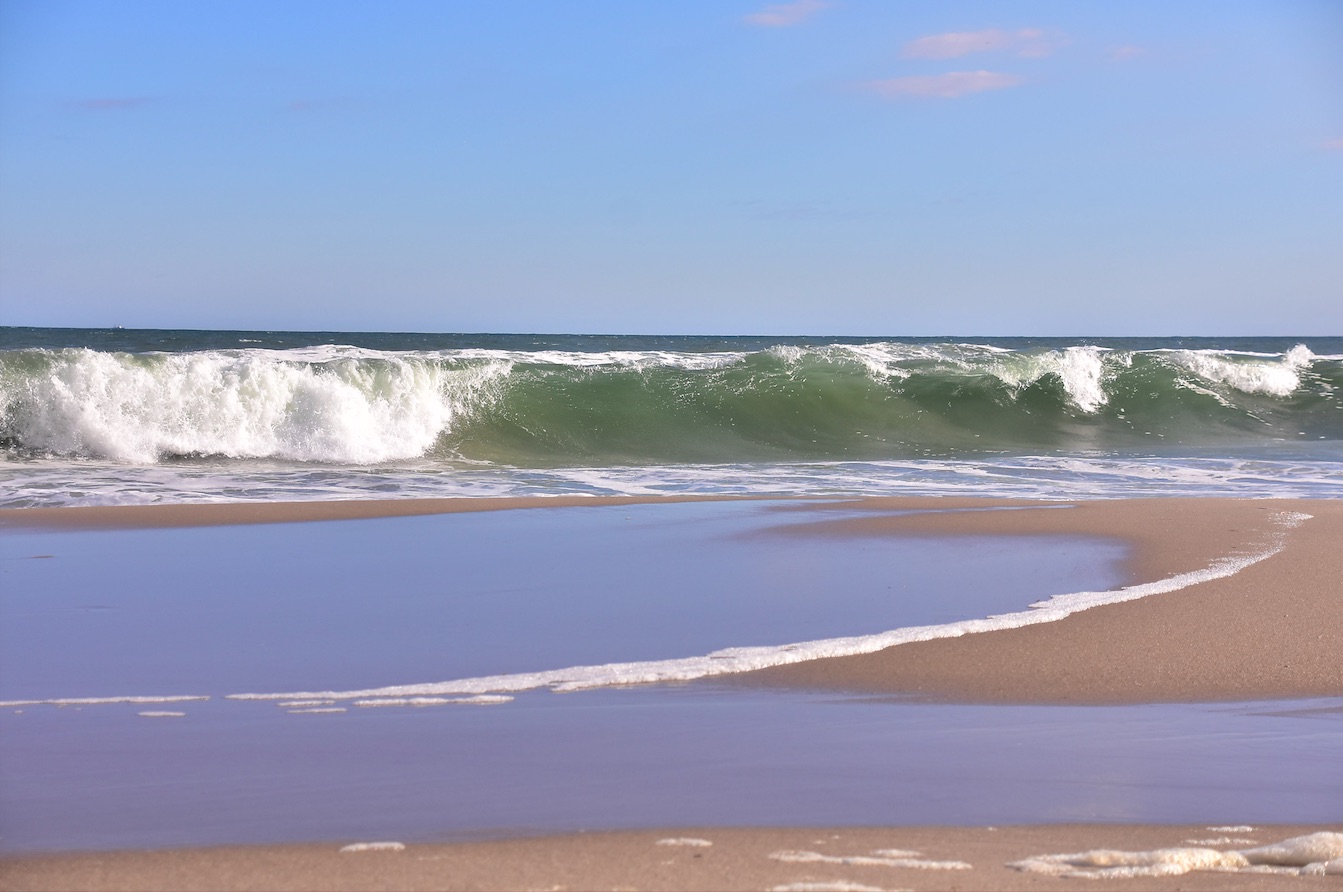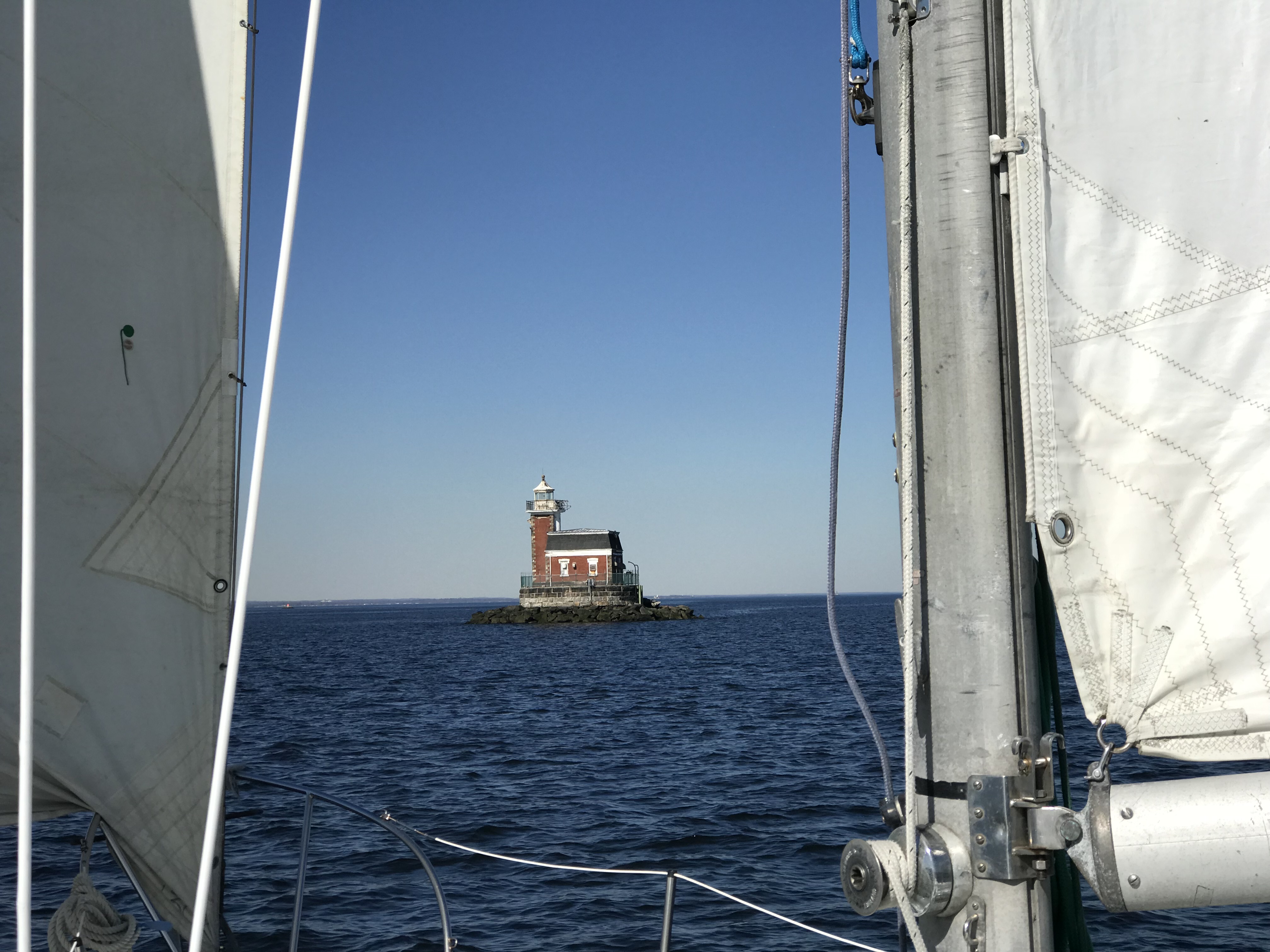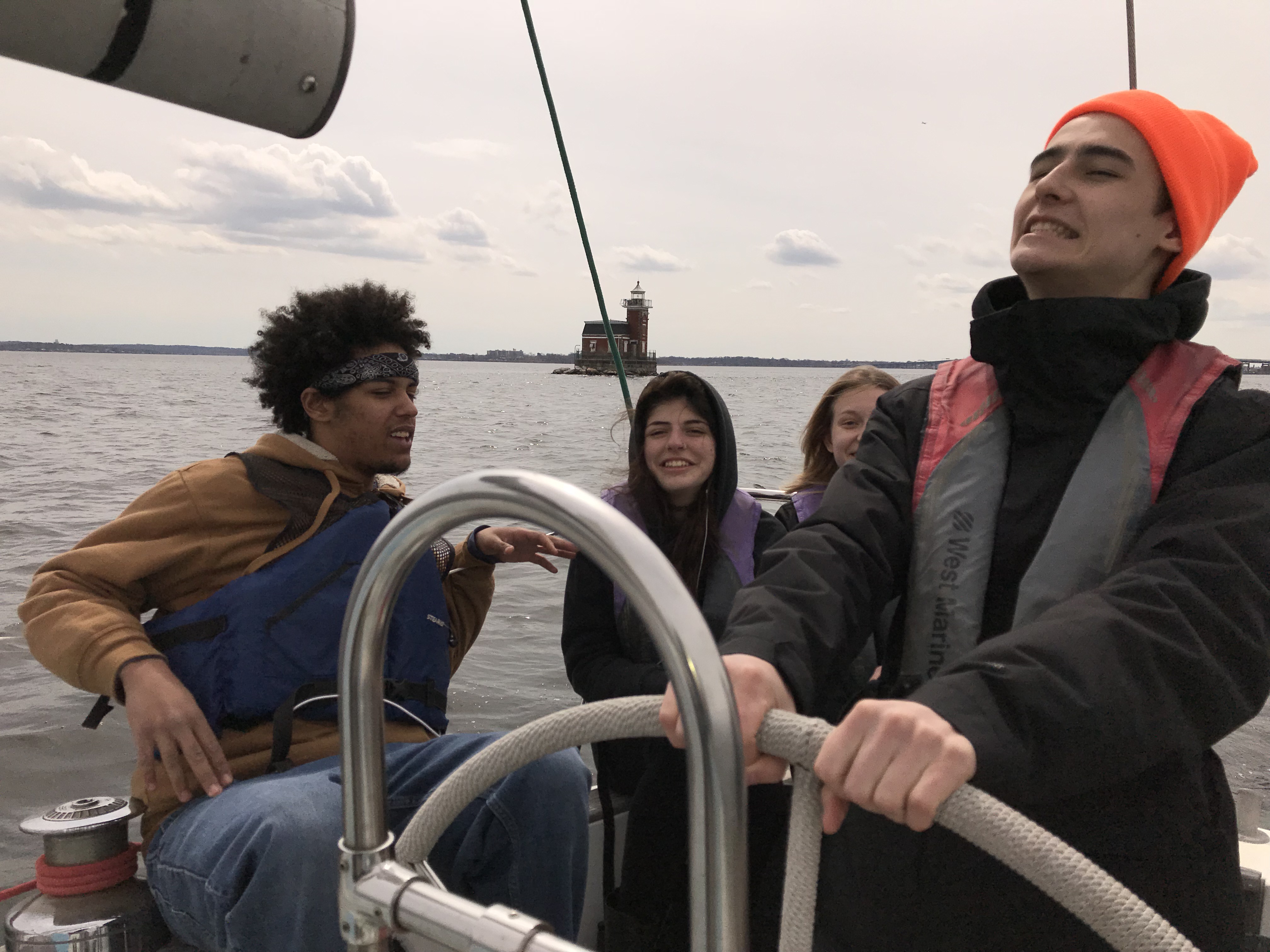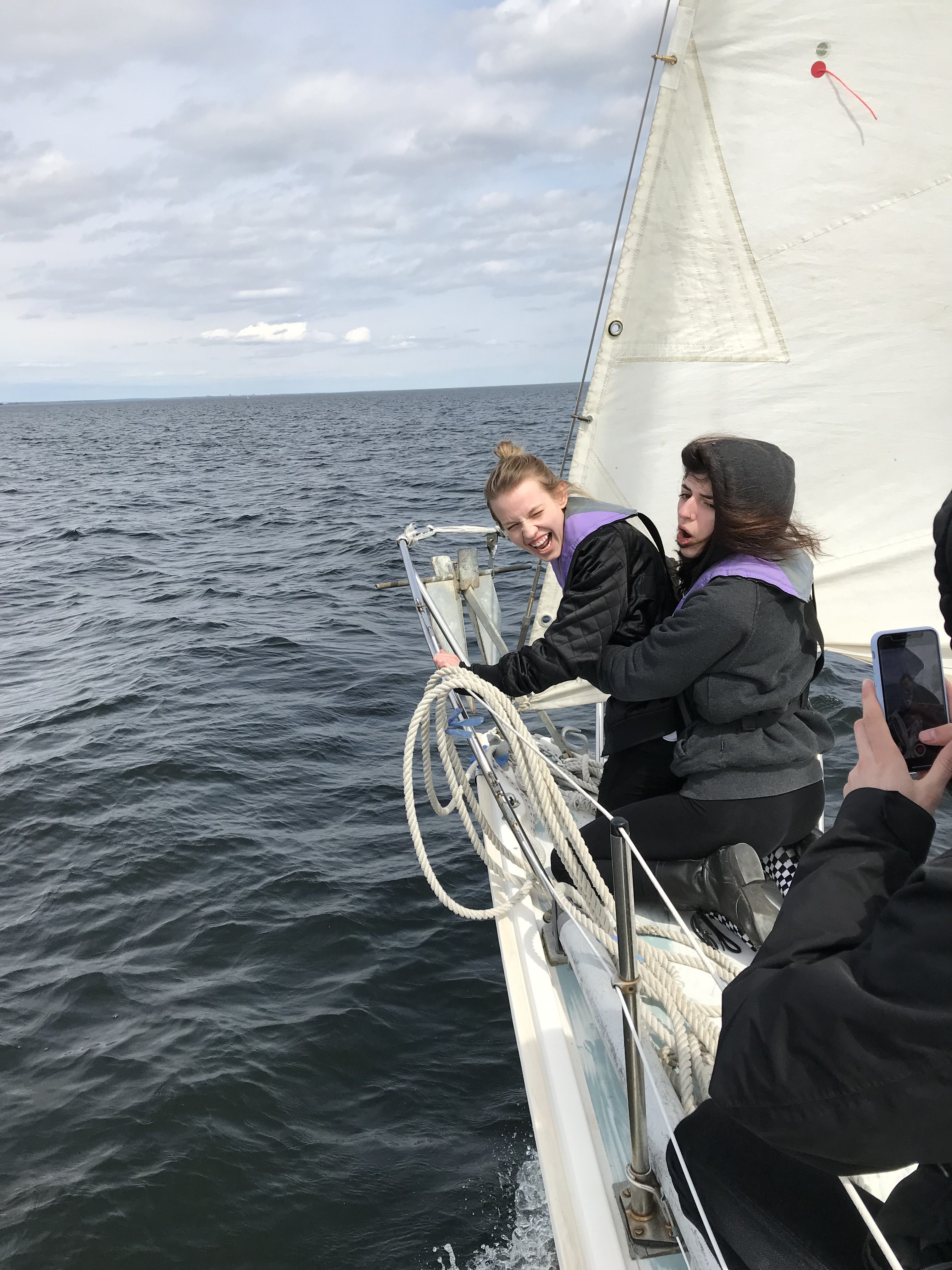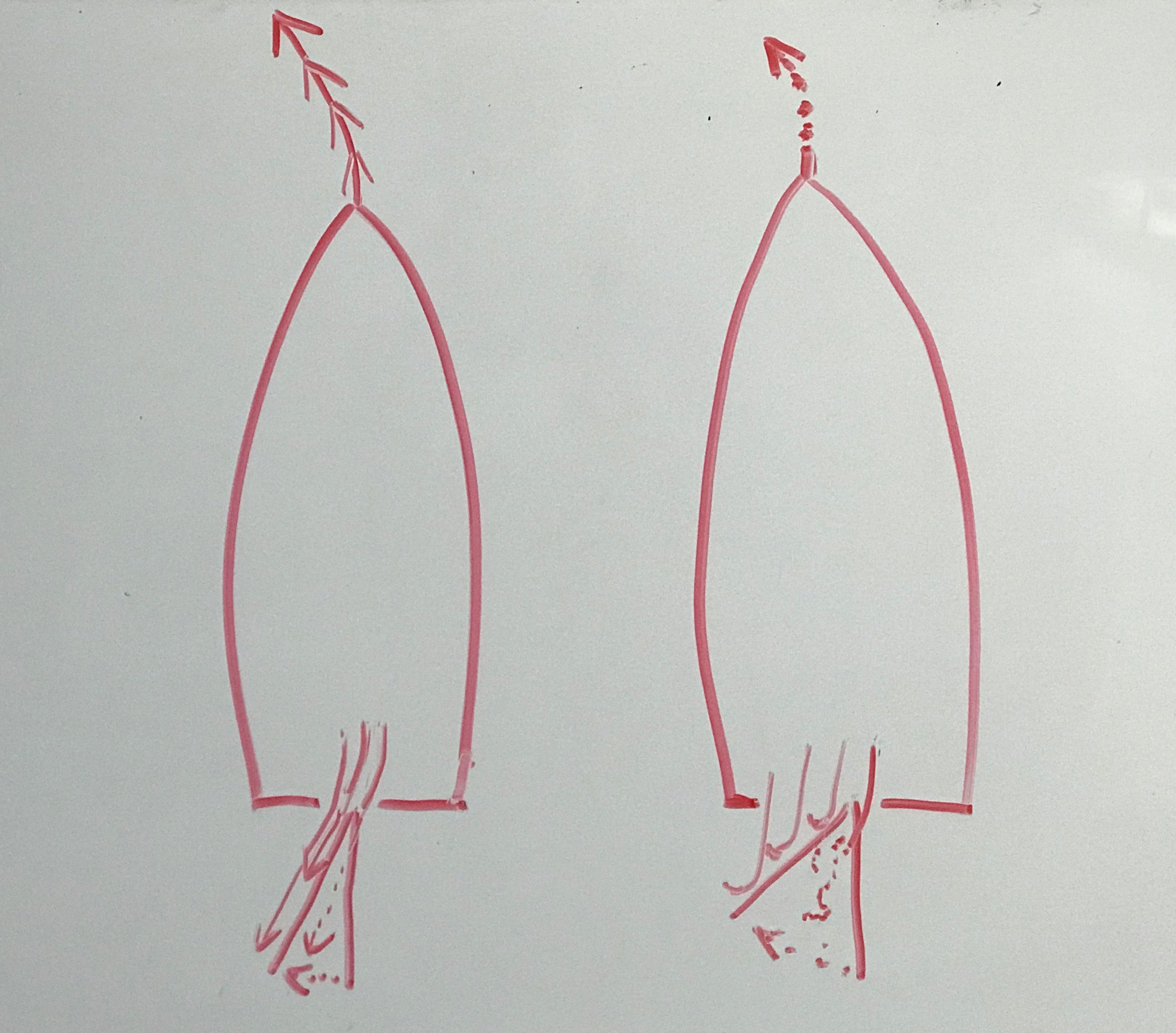IN THIS RANT: the ‘slipstream’ phenomenon, and why we need to keep much greater social distance when exercising outside – sprinkled with beach pics and boating right-of-way bits.
I’m still driving to Breezy Point from time to time to slip the park crowds on nice days. Why? Social distancing doesn’t seem to apply to bikers and joggers.
Maybe it’s self-centered laziness. Maybe it’s a healthier-than-thou attitude. Hopefully, it’s lack of awareness of what I’m going to write about below. But regardless, just like “Red, Right, Returning,” it’s WRONG. No, that’s not about right-of-way, but still…
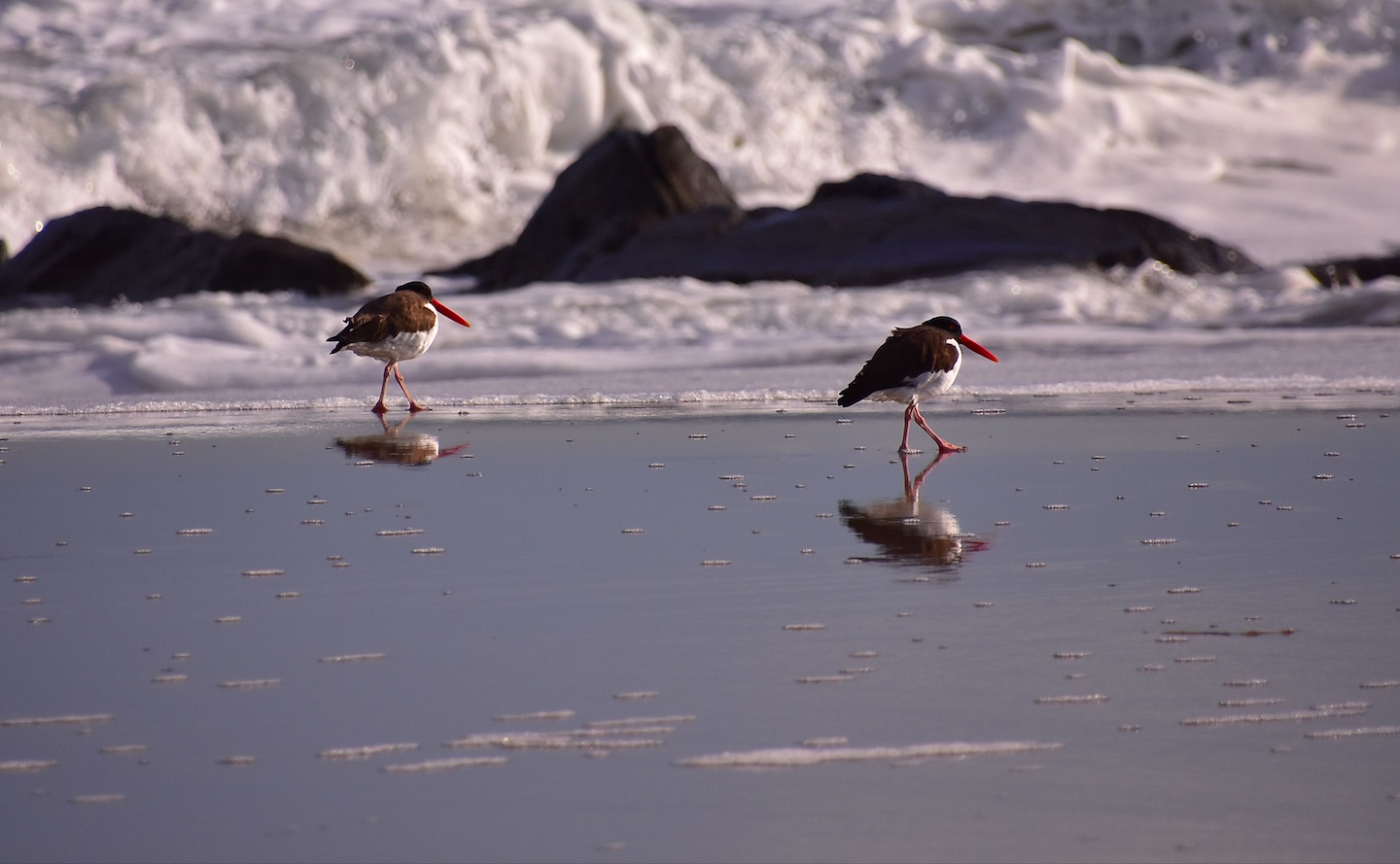
The image below is from a post by Jurgen Thoelen on Medium, which describes how studies in Belgium and The Netherlands conclude we need to allow MUCH more distance between us when exercising in public by biking and running. Even just walking. Jurgen sums it up well:
When someone during a run breathes, sneezes or coughs, those particles stay behind in the air. The person running behind you in the so-called slip-stream goes through this cloud of droplets.
Jurgen Thoelen, “Belgian-Dutch Study: Why in times of COVID-19 you can not walk/run/bike close to each other.”
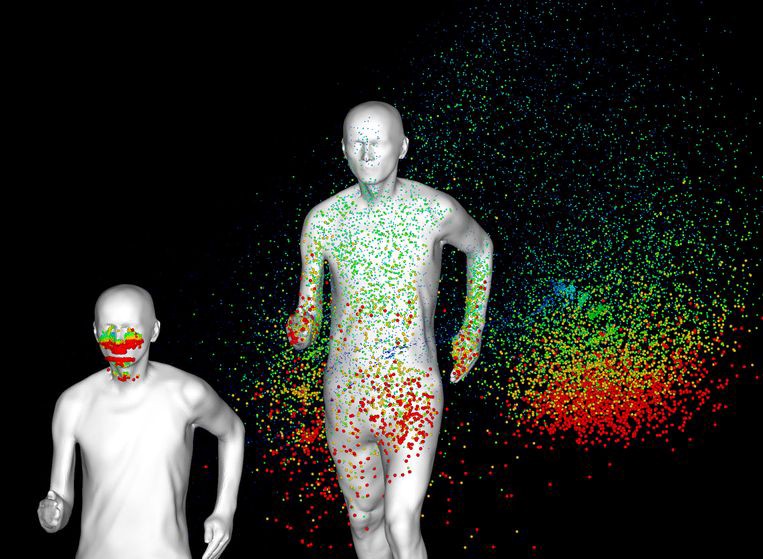
I’ve been bitching about bikers and runners zooming (or slogging) right past pedestrians since this crisis got real. They often don’t take any care to pass at any distance, breezing – literally – as close as a foot or two past others. They’re breathing harder, and exhaling it onto those they pass.
As a lifelong sailor and angler, I’m acutely aware of the breeze at all times. I take care to try to stay upwind of anyone talking, breathing harder for any reason, and now – at the near apex of the infection and body count in NYC – not wearing facial covering or a mask. I mostly walk for exercise, but when weather favors it I ride my bike in Riverside Park on the mid-level esplanade. That way there’s room to see what’s ahead, and astern – with no surprises. I had to all but give that up with the extra crowds on nicer days as more people have more time to get to the park. It’s the only bright side of things for many people.
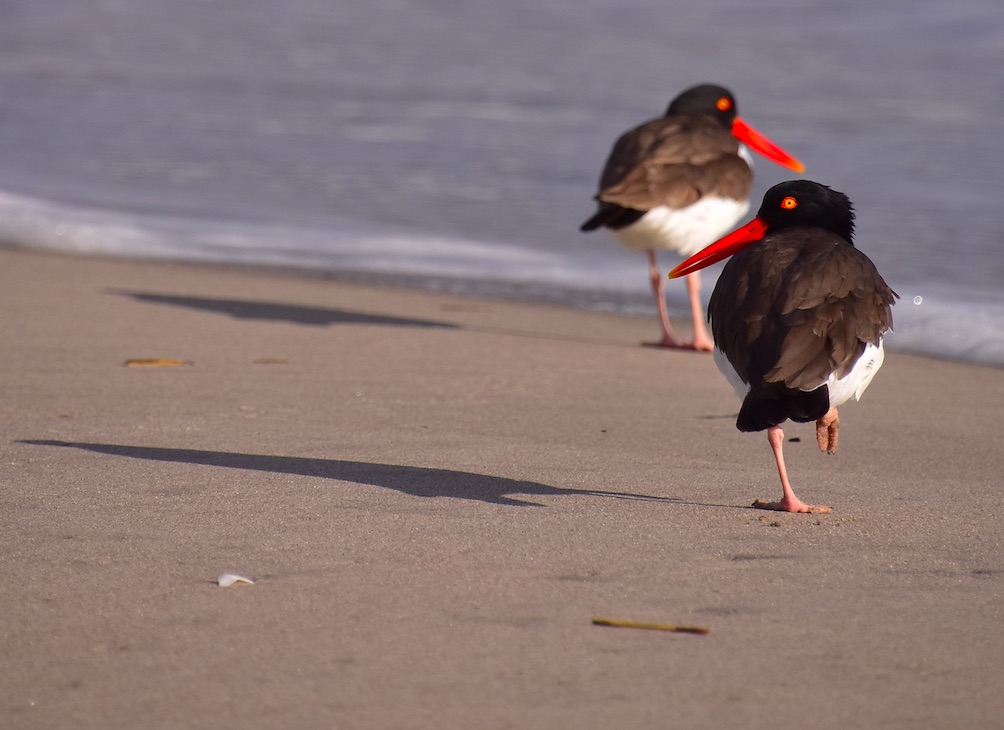
So, when I’m to windward of them (upwind), I’m also aware of the breeze carrying my breath in their direction. I stay farther away. Same for walking down the street. Windward sailing vessels give way to leeward ones (downwind) when they have the wind coming from the same side. Right or left; starboard or port… doesn’t matter what you call it as long as they both have it on the same side of their vessel. The problem is that on the pavement or in the park, people aren’t meeting me – or others – half way in return.
(Meeting, for right of way, is when two power driven vessels are approaching each other head-on or nearly so. This rule doesn’t apply to sailing vessels.)
One day in Prospect Park, that caused me to politely call out a passing pair of peeps (couple) who didn’t make any effort to walk in-line rather than side by side, forcing my other half and I to leave the road and walk in the dirt. The response I got was inappropriate, and so the convo degenerated. Who needs that when trying to maintain social distance while maintaining mental and physical well-being? Sheesh…
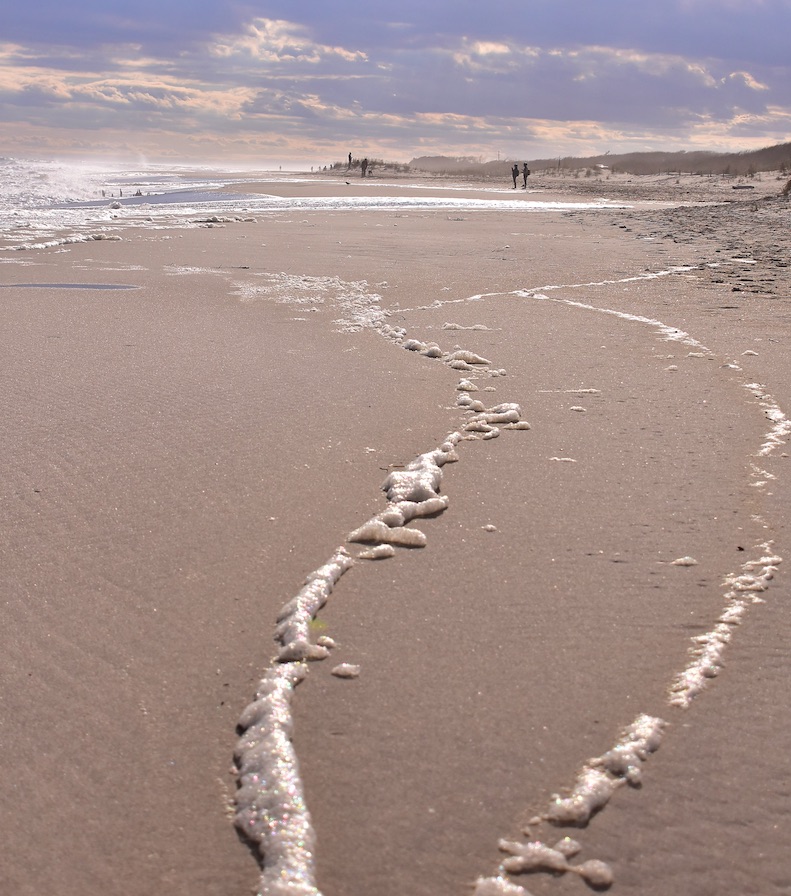
I’ve actually given serious thought to speaking softly and carrying a social distance stick with a fuzzy soft end (like a long handled duster). That can’t be construed as a weapon if aimed at a crossing biker or runner who won’t keep clear, right? Eh… let’s not go there, and so I don’t take the stick with me. Yet.
(Crossing is when two power driven vessels encounter each other, and they’re not meeting. So, they’re each to the other’s side. Even if one is coming slightly from behind; just not mostly. Yes, this gets technical; no, we don’t need to fully elaborate here. If you’re coming mostly from behind, you’re overtaking and you keep clear of what’s ahead. Guess what? That applies to sailboats coming up on power boats! Yeah. Back to our health…
6 feet away, or 6 feet under!
Steve Card, frequent recent rant. I penned it, but later saw that someone else came up with a slight variation so I’m sure many others have.
…for walking, the distance of people moving in the same direction in 1 line should be at least 4–5 meter, for running and slow biking it should be 10 meters and for hard biking at least 20 meters. Also, when passing someone it is advised to already be in different lane at a considerable distance e.g. 20 meters for biking.
Jurgen Thoelen, in the Medium post we’ve referenced and will link to below.
So, 6 feet ain’t nearly enough! Not unless we’re walking slowly with no wind, or stationary.
That’s the takeaway. I bike; I get it. It’s hard to keep distance when people are everywhere, often moving at different speeds and directions, on foot or on a ‘vessel.’ That can’t be an excuse; it’s potentially dangerous to others…
- You might be infected and contagious and not know it.
- You might pass someone else who is.
- Forget SARS/COVID-19: you might hit someone!
So, if you can’t Overtake, Meet, or Cross responsibly… JUST DON’T DO IT.
